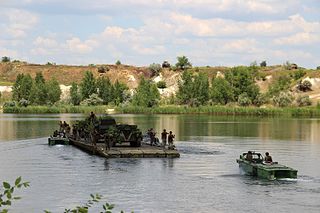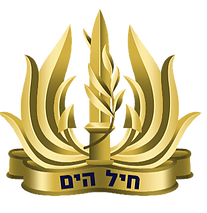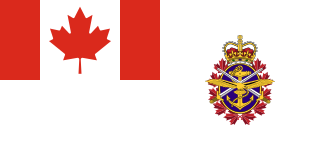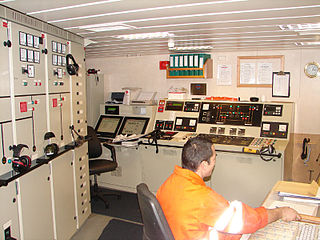Related Research Articles

Military engineering is loosely defined as the art, science, and practice of designing and building military works and maintaining lines of military transport and military communications. Military engineers are also responsible for logistics behind military tactics. Modern military engineering differs from civil engineering. In the 20th and 21st centuries, military engineering also includes CBRN defense and other engineering disciplines such as mechanical and electrical engineering techniques.

The Indian Coast Guard (ICG) is a maritime law enforcement and search and rescue agency of India with jurisdiction over its territorial waters including its contiguous zone and exclusive economic zone. It was formally established on 1 February 1977 by the Coast Guard Act, 1978 of the Parliament of India. It operates under the Ministry of Defence.

The Pakistan Navy (PN) is the uniform naval warfare branch of the Pakistan Armed Forces. The President of Pakistan is the Supreme Commander of the Navy. The Chief of the Naval Staff, a four-star admiral commands the navy. The Pakistan Navy operates on the coastline of Pakistan in the Arabian Sea and Gulf of Oman. It was established in August 1947, following the independence of Pakistan from the United Kingdom.

The Israeli Navy is the naval warfare service arm of the Israel Defense Forces, operating primarily in the Mediterranean Sea theater as well as the Gulf of Eilat and the Red Sea theater. The current commander in chief of the Israeli Navy is Aluf David Sa'ar Salama. The Israeli Navy is believed to be responsible for maintaining Israel's offshore nuclear second strike capability.

A military staff or general staff is a group of officers, enlisted and civilian staff who serve the commander of a division or other large military unit in their command and control role through planning, analysis, and information gathering, as well as by relaying, coordinating, and supervising the execution of their plans and orders, especially in case of multiple simultaneous and rapidly changing complex operations. They are organised into functional groups such as administration, logistics, operations, intelligence, training, etc. They provide multi-directional flow of information between a commanding officer, subordinate military units and other stakeholders. A centralised general staff results in tighter top-down control but requires larger staff at headquarters (HQ) and reduces accuracy of orientation of field operations, whereas a decentralised general staff results in enhanced situational focus, personal initiative, speed of localised action, OODA loop, and improved accuracy of orientation.
The Air Force Specialty Code (AFSC) is an alphanumeric code used by the United States Air Force to identify a specific job. Officer AFSCs consist of four characters and enlisted AFSCs consist of five characters. A letter prefix or suffix may be used with an AFSC when more specific identification of position requirements and individual qualifications is necessary. The AFSC is similar to the Military Occupational Specialty Codes used by the United States Army and the United States Marine Corps or enlisted ratings and USN officer designators and Naval Officer Billet Classifications (NOBCs) used by the United States Navy and enlisted ratings and USCG officer specialties used by the United States Coast Guard. The United States Space Force equivalent is known as the Space Force Specialty Code (SFSC).
This article describes the administration of the British Admiralty. As of 1911, it consisted of the following branches and officers.
Seafaring is a tradition that encompasses a variety of professions and ranks. Each of these roles carries unique responsibilities that are integral to the successful operation of a seafaring vessel. A ship's crew can generally be divided into four main categories: the deck department, the engineering department, the steward's department, and other. The reasoning behind this is that a ship's bridge, filled with sophisticated navigational equipment, requires skills differing from those used on deck operations – such as berthing, cargo and/or military devices – which in turn requires skills different from those used in a ship's engine room and propulsion, and so on.

Machinist's mate is a rating in the United States Navy's engineering community.

Marine engineering is the engineering of boats, ships, submarines, and any other marine vessel. Here it is also taken to include the engineering of other ocean systems and structures – referred to in certain academic and professional circles as “ocean engineering.”

The Pakistan Navy Engineering College (PNEC), (Urdu: دانشکدہ بحریہ برائے علومِ مہندسی ، پاکستان) also called PNS Jauhar, is a military college operated by the Pakistan Navy. Located in Karachi, Sindh, Pakistan, it is also a constituent college of the National University of Sciences and Technology, Pakistan. It grants bachelor's, master's and doctoral degrees in the science and engineering disciplines.

Personnel branches, in the Canadian Armed Forces (CAF), are groupings of related military occupations.

This is a list of Royal Navy ratings rank insignia.

An engineering officer or simply engineer, is a licensed mariner qualified and responsible for operating and maintaining the propulsion plants and support systems for a watercraft and its crew, passengers and cargo. Engineering officers are usually educated and qualified as engineering technicians.

The Turkish Naval Academy is a four-year co-educational military academy and part of the National Defence University. It is located in the district of Tuzla in Istanbul. Its mission is to develop cadets mentally and physically for service as commissioned officers in the Turkish Navy. It must not be confused with Naval War Institute.

The Royal Corps of Naval Constructors (RCNC) is an institution of the British Royal Navy and Admiralty for training in naval architecture, marine, electrical and weapon engineering. It was established by Order in Council in August 1883, on the recommendation of the naval architect Sir William White. Its precursor was the Royal School of Naval Architecture, London.
The PNS Karsaz is the naval station and the largest technical training facility located in the urban neighborhood of Karsaz in Karachi that provides technical education on the subjects of the mechanics and the electronics for the Navy's enlisted personnel upon their passing out from the PNS Himalaya— the Navy's only basic training boot camp in Manora Island in Karachi coast, Sindh in Pakistan.
The United States Navy Nuclear Propulsion community consists of Naval Officers and Enlisted members who are specially trained to run and maintain the nuclear reactors that power the submarines and aircraft carriers of the United States Navy. Operating more than 80 nuclear-powered ships, the United States Navy is currently the largest naval force in the world.
An Artificer is an appointment held by a member of an armed forces service who is skilled at working on electronic, electrical, electro-mechanical and/or mechanical devices. The specific term "artificer" for this function is typical of the armed forces of countries that are or have been in the British Commonwealth and refers to a Senior Non-Commissioned Officer. Artificer is a job title and not a rank.

Vice Admiral Thomas J. Moore was a senior officer in the United States Navy. He retired from active duty on June 19, 2020, after 39 years of service. He currently serves as Vice President of Nuclear Operations at Huntington Ingalls Industries.
References
- Engineer Officer, Royal Navy.
- https://web.archive.org/web/20160304075442/http://www.royalnavy.mod.uk/static/pages/4746.html
This article incorporates text from a publication now in the public domain : Wood, James, ed. (1907). The Nuttall Encyclopædia . London and New York: Frederick Warne.{{cite encyclopedia}}: Missing or empty |title= (help)